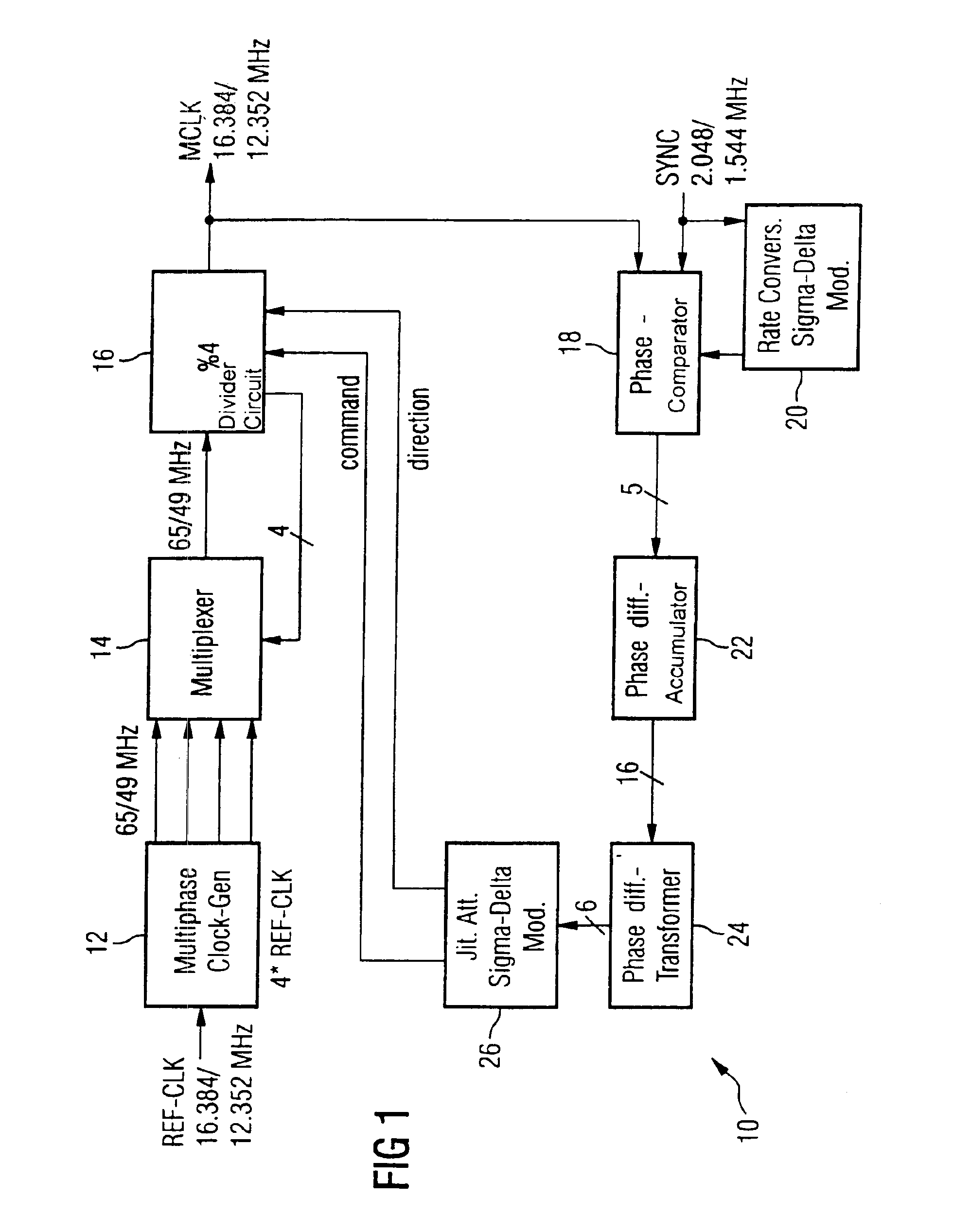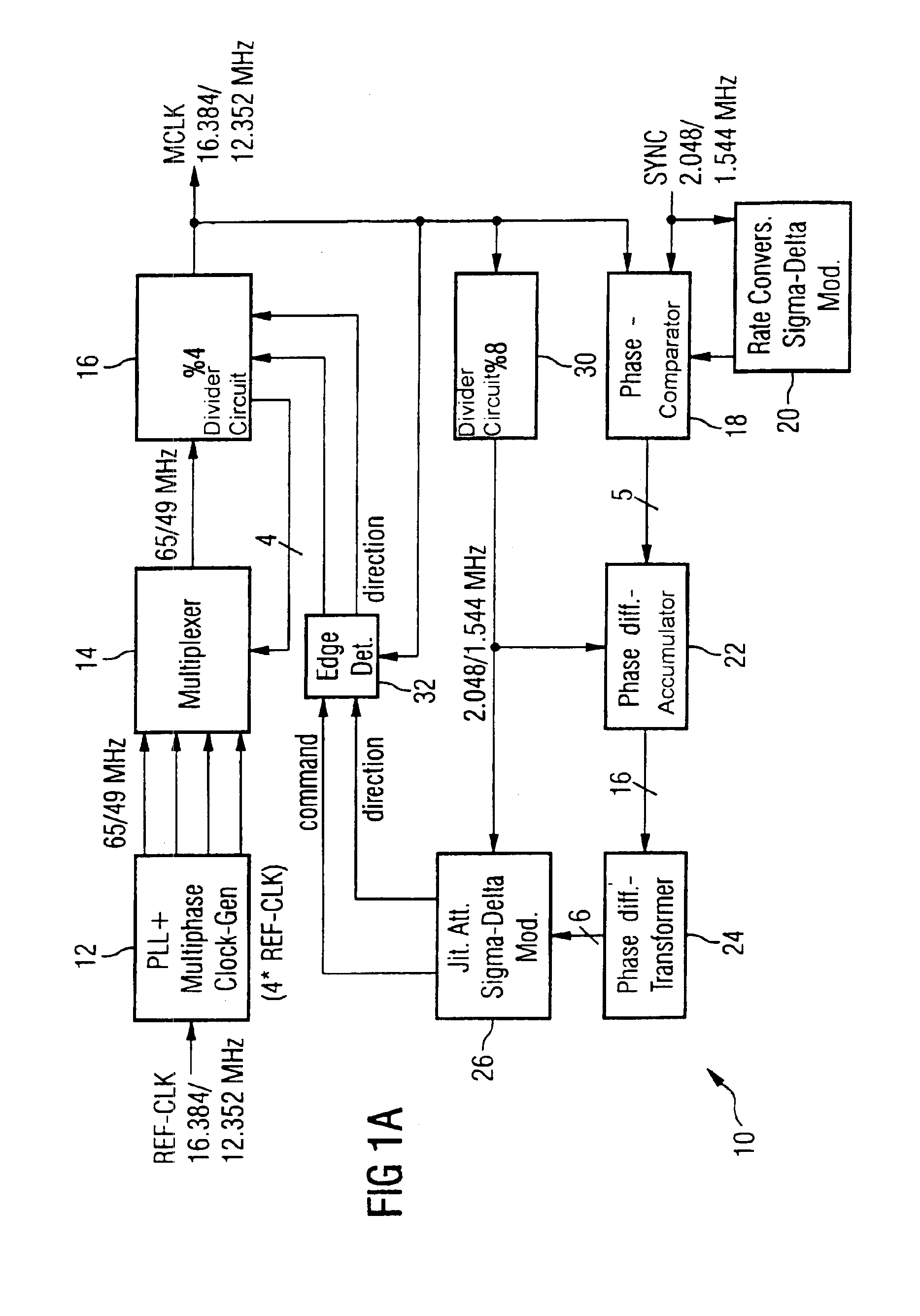Digitally controlled circuit for reducing the phase modulation of a signal
a digital control circuit and signal technology, applied in the field of digital control circuits, to achieve the effect of reducing the phase modulation of the signal
- Summary
- Abstract
- Description
- Claims
- Application Information
AI Technical Summary
Benefits of technology
Problems solved by technology
Method used
Image
Examples
Embodiment Construction
In all the figures of the drawing, sub-features and integral parts that correspond to one another bear the same reference symbol in each case. Referring now to the figures of the drawing in detail and first, particularly, to FIG. 1 thereof, there is shown an outline block diagram of a digitally controlled circuit according to the invention for reducing phase modulation of a signal, including a clock-rate conversion using a sigma-delta modulator. A jittered input signal SYNC is in this case compared with a master clock MCLK. The latter at the same time represents the output signal of the circuit. A determined phase difference is integrated in a sigma-delta modulator. The principle of sigma-delta modulators is based on phase-error accumulation. A phase error between the MCLK and the MCLK required by the control system is recalculated and at the same time evaluated in each basic clock cycle. The aim is thus to generate the clock MCLK which has no jitter, digitally and without using any...
PUM
 Login to View More
Login to View More Abstract
Description
Claims
Application Information
 Login to View More
Login to View More - R&D
- Intellectual Property
- Life Sciences
- Materials
- Tech Scout
- Unparalleled Data Quality
- Higher Quality Content
- 60% Fewer Hallucinations
Browse by: Latest US Patents, China's latest patents, Technical Efficacy Thesaurus, Application Domain, Technology Topic, Popular Technical Reports.
© 2025 PatSnap. All rights reserved.Legal|Privacy policy|Modern Slavery Act Transparency Statement|Sitemap|About US| Contact US: help@patsnap.com



